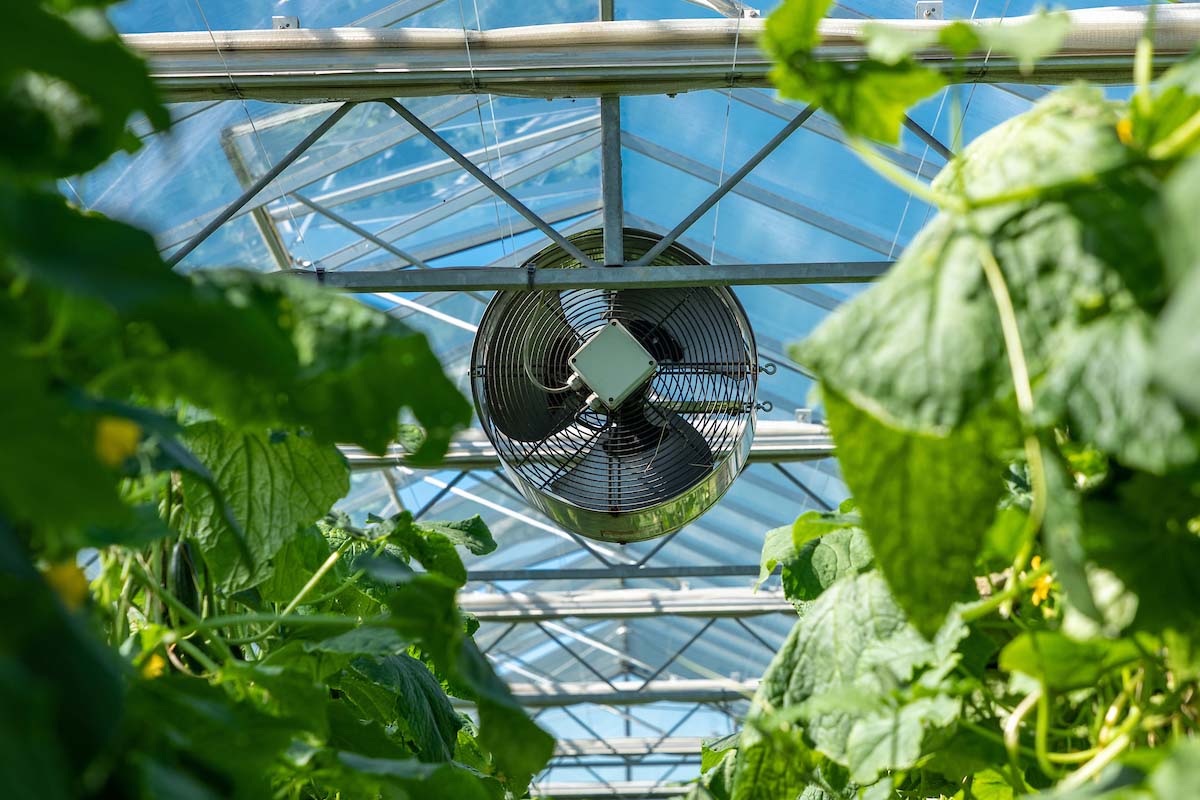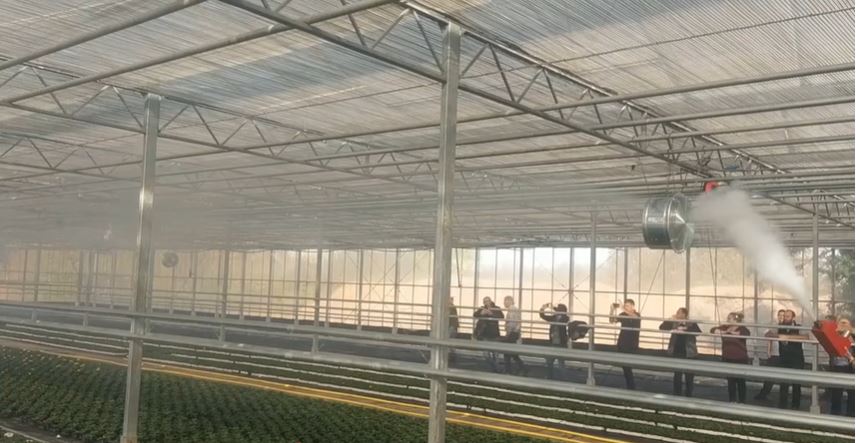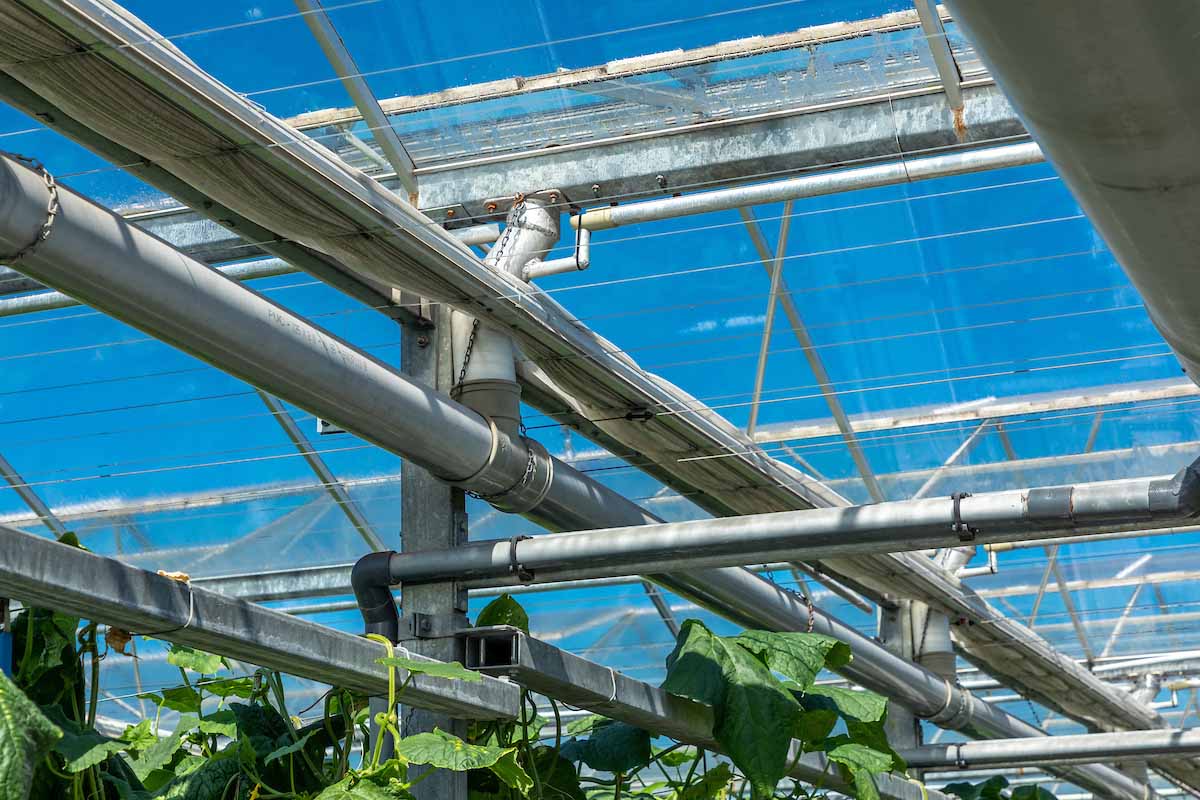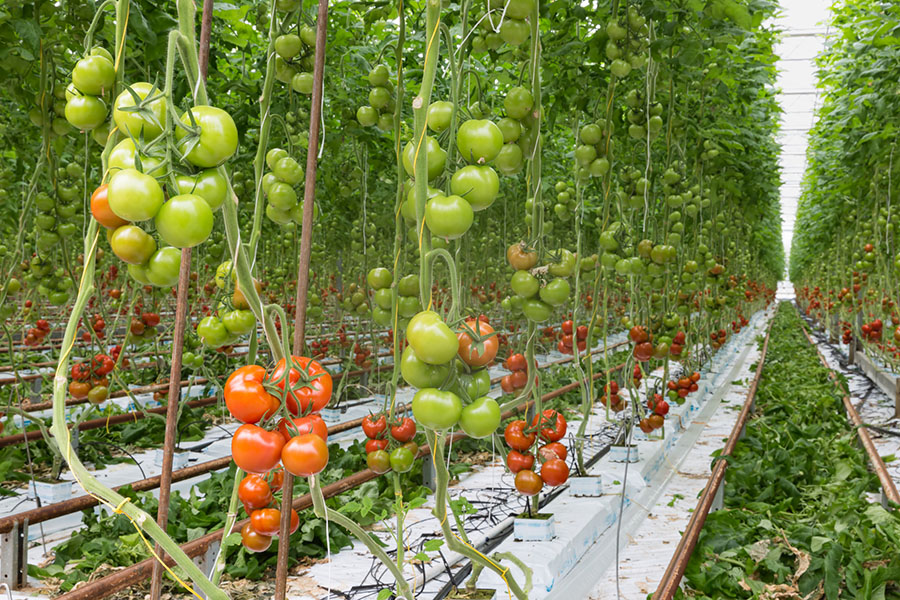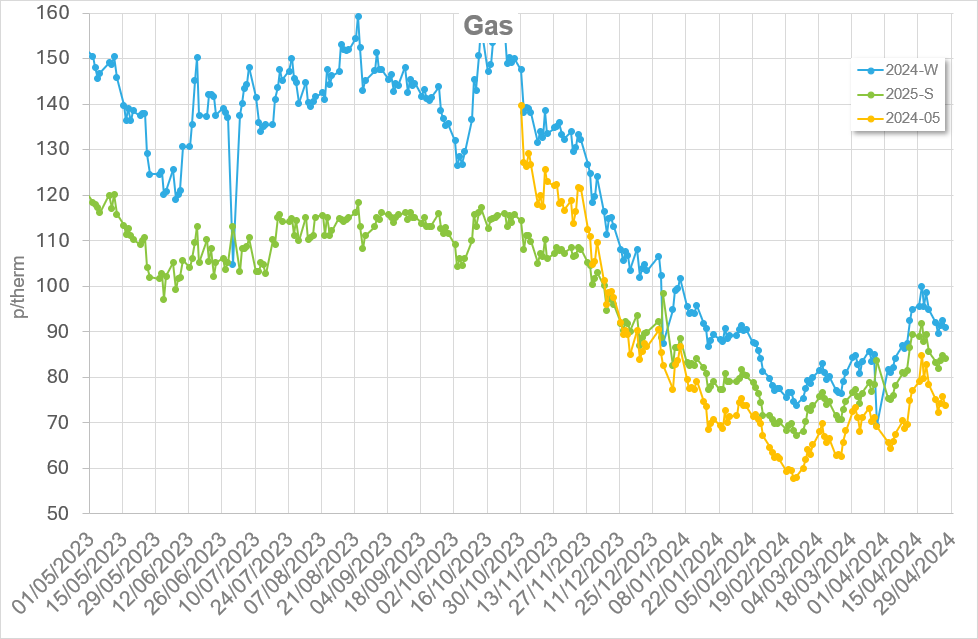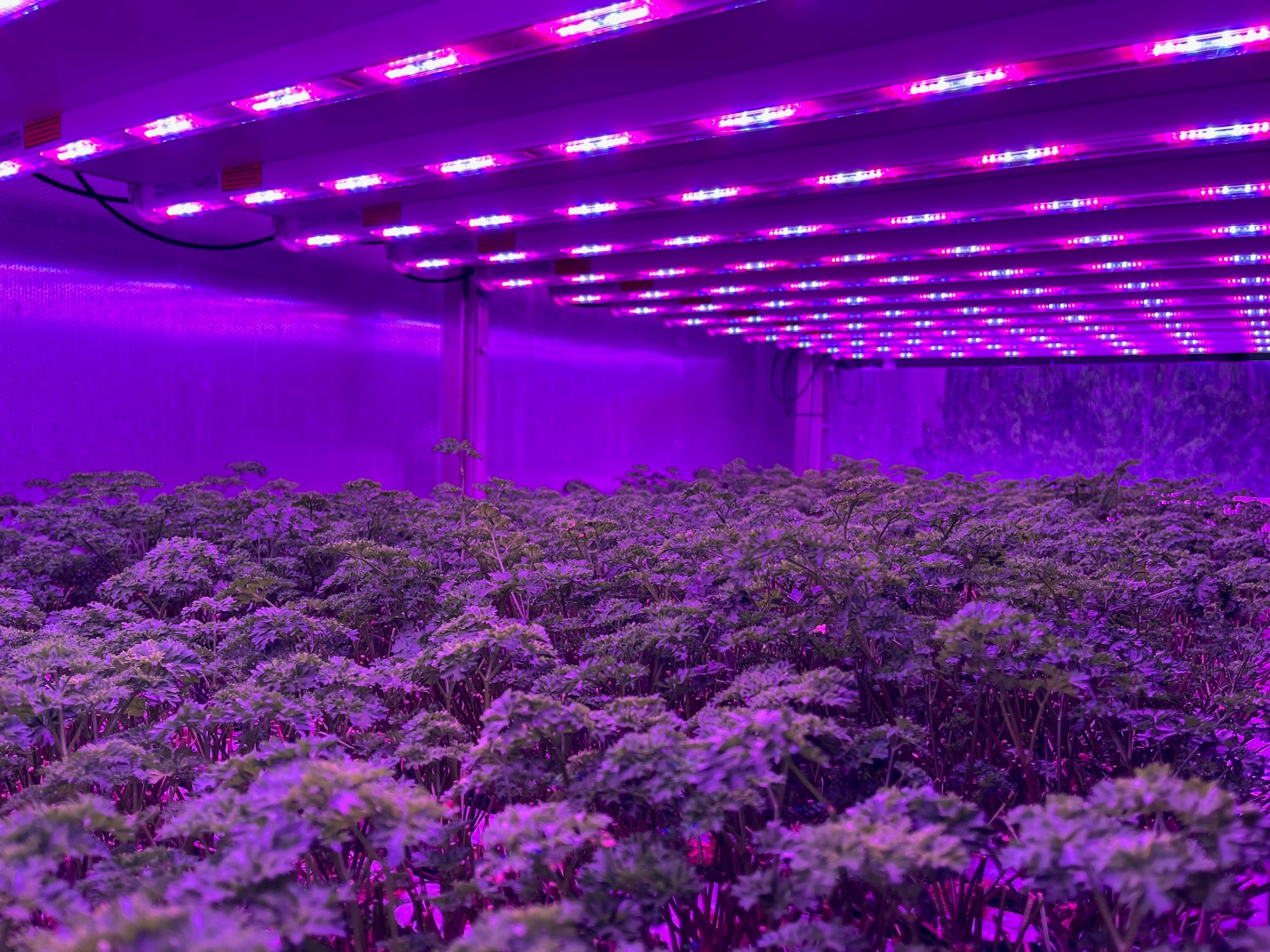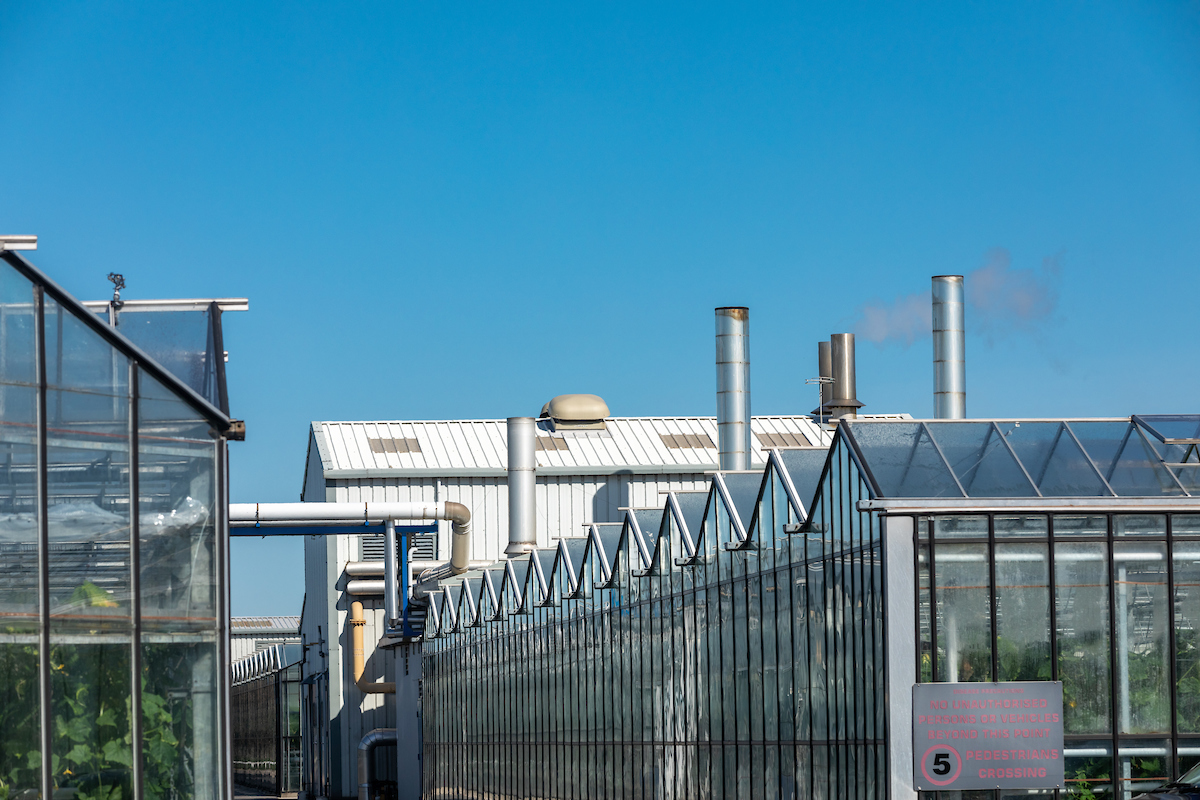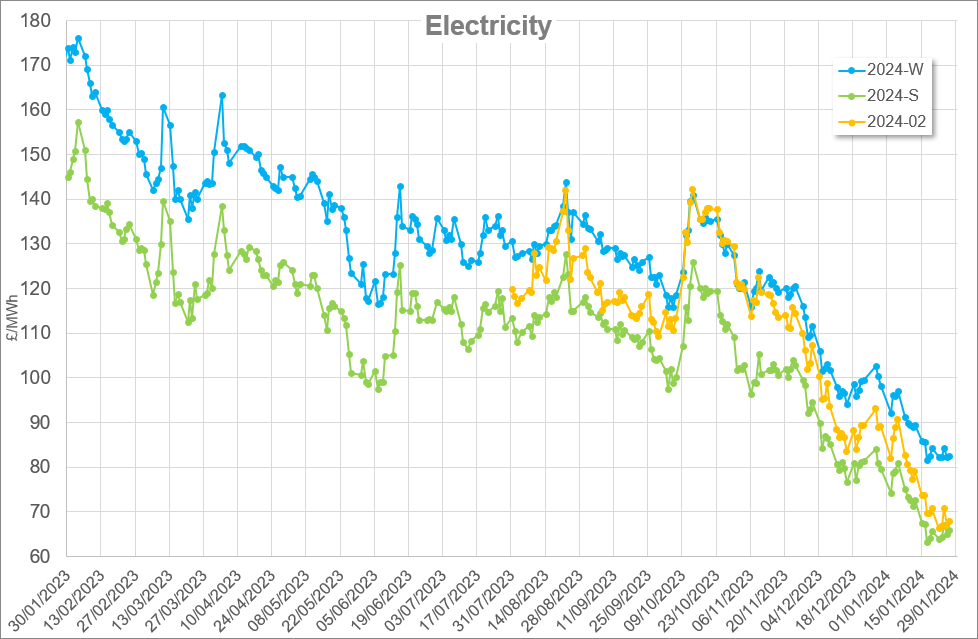First published May 2015
Learn about the benefits of having an effective air movement system in your greenhouse and the key design and operational aspects to consider.
Quick links:
- Lower heating costs and better crop performance
- Benefits and key aspects of greenhouse air movement
- Innovation in air circulation
- Screens and energy saving
Lower heating costs and better crop performance
When growing plants outside, it’s a given that there will be good levels of natural air movement. But, when it comes to growing plants in a greenhouse, it’s a different story.
In a greenhouse, the lack of wind means that temperature and humidity conditions become localised. This can cause a number of problems related to cropping performance, disease and energy use. Therefore, artificial promotion of air movement is desirable.
Most greenhouse designers would agree that the science of air movement design is somewhat of a ‘black art’, with debate on how it should be configured and controlled.
Some things are not in doubt, however, and the economics of an effective system can soon be justified by a reduction in heating costs and better crop performance. Looking forward, it’s clear that air movement systems will be an increasingly important part of greenhouse design. The potential benefits of the technique are too big to ignore.
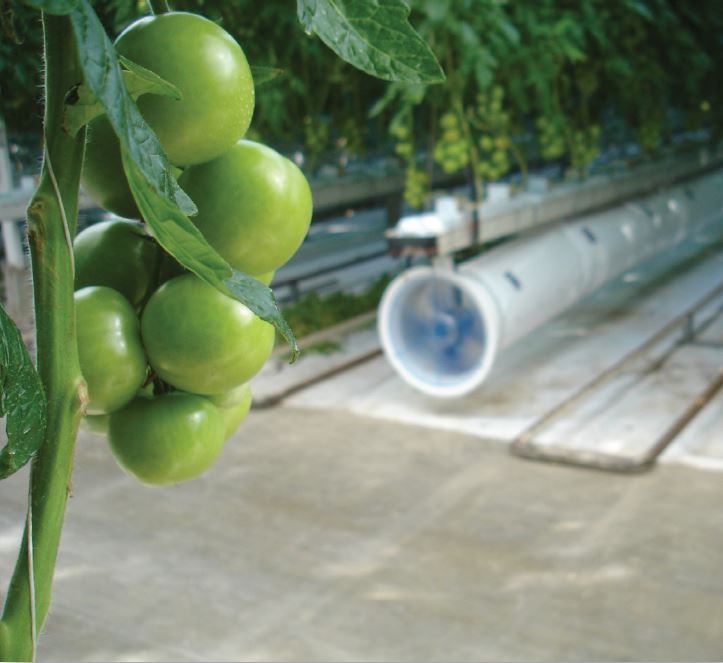
Benefits and key aspects of greenhouse air movement
The main benefits of evening out temperature and humidity gradients in a greenhouse and an overview of the key aspects to consider, including energy use and control.
The main benefits
The main benefits that come from evening out temperature and humidity gradients in a greenhouse are:
- Lower heating costs: Heat isn’t wasted by supporting high ridge temperatures or by controlling on the ‘worst case’ area.
- More even cropping: Even conditions mean that more of the crop is kept in the optimum temperature and humidity band.
- Less risk of disease: Again, more of the crop is in the optimum temperature and humidity zone.
The basics
An effective, but rather expensive, solution to air movement problems is to maintain a minimum heating pipe temperature. This promotes convection of warm dry air. The use of fans is an infinitely cheaper option, but the configuration of systems is not definitive.
One issue is that installing fans is expensive, and the temptation for installers is to use a smaller number of larger fans to service a given area. This is OK up to a point, but it can sometimes result in uneven air mixing. For something that works, expect to invest in the order of £12,000 per Ha in an installation. Cost correct as at November 2013.
What constitutes good uniformity?
In one of our projects we looked closely at air temperature uniformity both in conventional mixed compartments and in areas with fans and ducts. The benchmark ‘performance’ was considered to be a 1oC variation from centre path to wall.
This is useful number to bear in mind as, if you have an air mixing system in place, and your uniformity is worse than this, then it really needs reconfiguration or improvement. If you have no air mixing system and your uniformity is worse than this, it’s worth thinking about installing a system.
Energy use
From an energy perspective it’s more economical to move large amounts of air at low speed and pressures. Unfortunately few fans are designed to achieve this and many buyers are blinded by the performance of high speed systems with little regard to operational costs. It should be possible to source fans that will give better than 20m3/h of air per W rating – a 100% improvement on older less efficient types.
Air circulation rates of between 1 and 2 volumes per hour are often recommended. So 1Ha of glass, 5m to the gutters might use 20 fans of between 2,500 to 5,000 m3 / h rating.
Running costs should be in the order of £27 per week per Ha based on 10 hours per day operation. This is about a 10th of the cost of providing the same air movement with pipe heat.
Note costs used are correct as at November 2013.
Control
It is not necessary to run fans all the time, so when humidity is acceptable and vents are more than 10% open, they can be switched off. Control of systems can be set up through the climate control computer.
Innovation in air circulation
A look at two main areas for innovation in air circulation – new fan design and ducted fan systems and dehumidification.
There are two main areas for innovation in air circulation. One involves the development of more efficient fan systems, the other is connected to the adoption of ducted fan systems and dehumidification.
New more efficient designs
The science of air recirculation is throwing up some innovative new products, developed specifically for that purpose — making them substantially different from traditional fan systems. The extraordinary appearance of the fan produced by Nivulator is a good example of this. However, it’s important to be aware that most fan systems are little more than an adaptation of equipment originally designed for other purposes.
Fans, ducts and dehumidification
A major influence on innovation has been the introduction of air distribution systems for the purpose of heating and dehumidification. Although their primary purpose has not been air mixing, it’s been necessary for them to also distribute air effectively.
The benefits that have accrued from some systems have, perversely, changed their primary objective from heat/dry air delivery to air mixing. This has led to the development of ‘simple’ fan and duct systems that are not designed to deliver heating.
Our earlier fans and ducts project included a large amount of work on improving air mixing. At the start of the work, the temperature variation between the wall and path in the trial greenhouse was 1°C. By using an effectively designed fan and duct system, this was reduced to 0.5°C. In addition, heating energy consumption reduced by 12%, and yields increased by 6.4%. Of course, the installation and running costs had to be paid for, but the operational benefits were apparent.
The economics
The underlying economic drivers look something like this:
| Item | Per m2 value |
| Installations cost | £1.75 |
| Fan energy use | 3 kWh |
| Fan running cost | 36p |
| Required annual benefit to give five-year payback | 71p |
| Benefit could accrue from heat energy saving and improvement in yield /quality | |
| Indicative energy saving from project | 22 kWh |
| Indicative saved energy value | 44 p |
| Each 1% increase in tomato yield worth | 25p |
This indicates that, energy saving alone is not enough to justify a scheme with systems starting to pay where yield increases of 1.5% and above are apparent.
Screens and energy saving
How the use of thermal screens affects the amount of natural air movement.
The constant drive to lower energy costs by reducing air infiltration, and by using barriers like thermal screens, has reduced the amount of natural air movement in a modern greenhouse.
Screens are an interesting example. When screens are drawn closed, the air above them is isolated from the rest of the greenhouse and it becomes stagnant and colder. But it does move slowly and, over the closed period, temperature differentials above the screens increase with colder air slowly gathering round colder parts of the structure, or where it is driven by external wind pressure.
Also, with sloping sites, colder heavier air gathers towards the lower end. When the screens are open, this causes notable difference in general air temperature in the general mass of the structure as cold air is ‘dumped’ at certain positions.
One solution has been to reduce air movement above the screens, rather than promote it. Compartmentalising the area above the screen using what have become known as ‘apex screens’ can achieve this.


